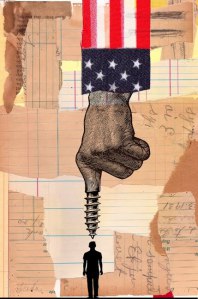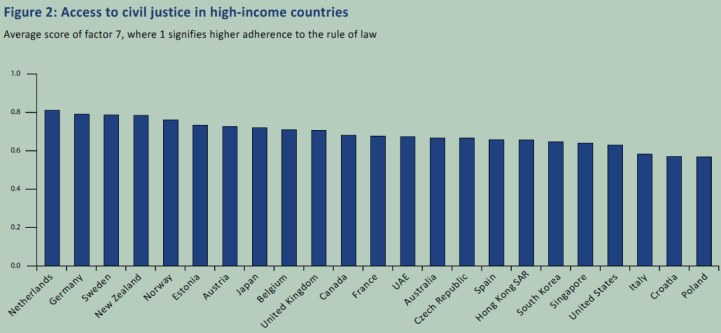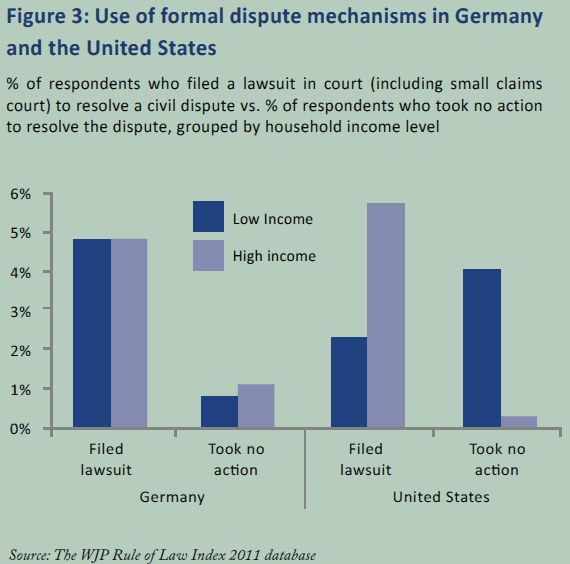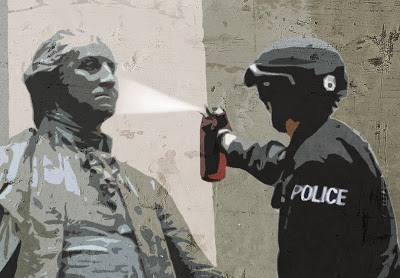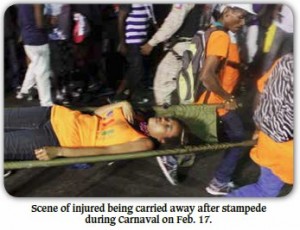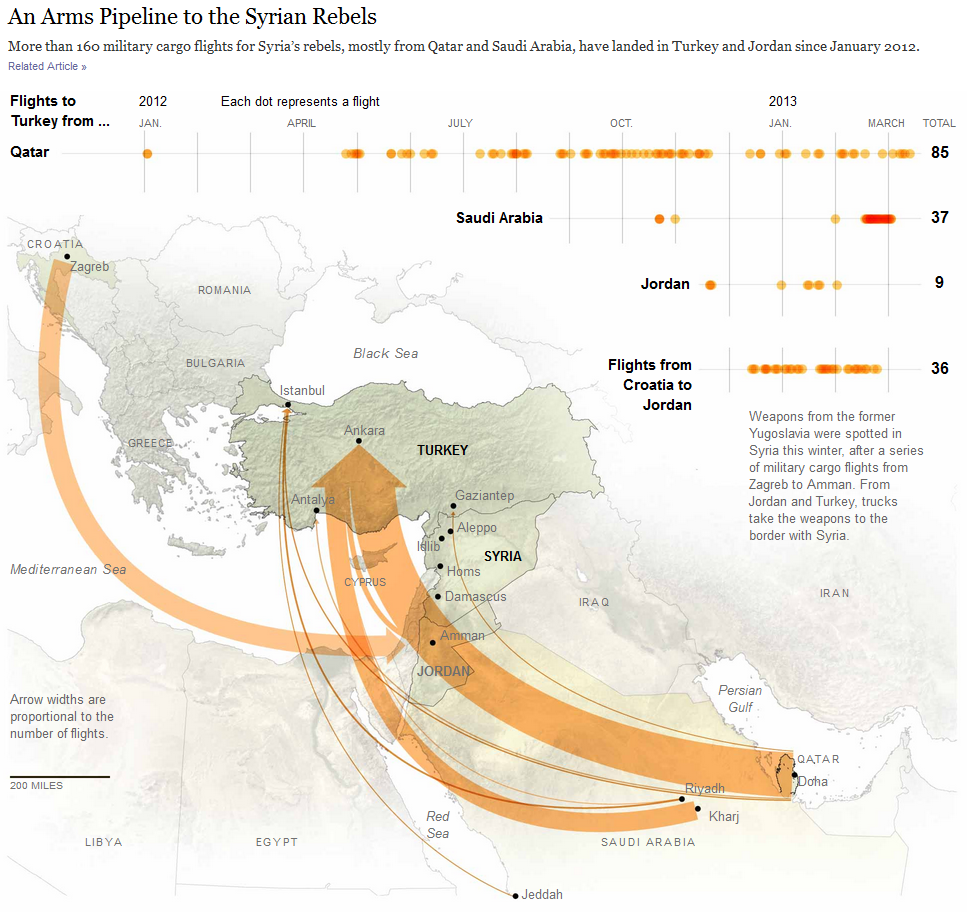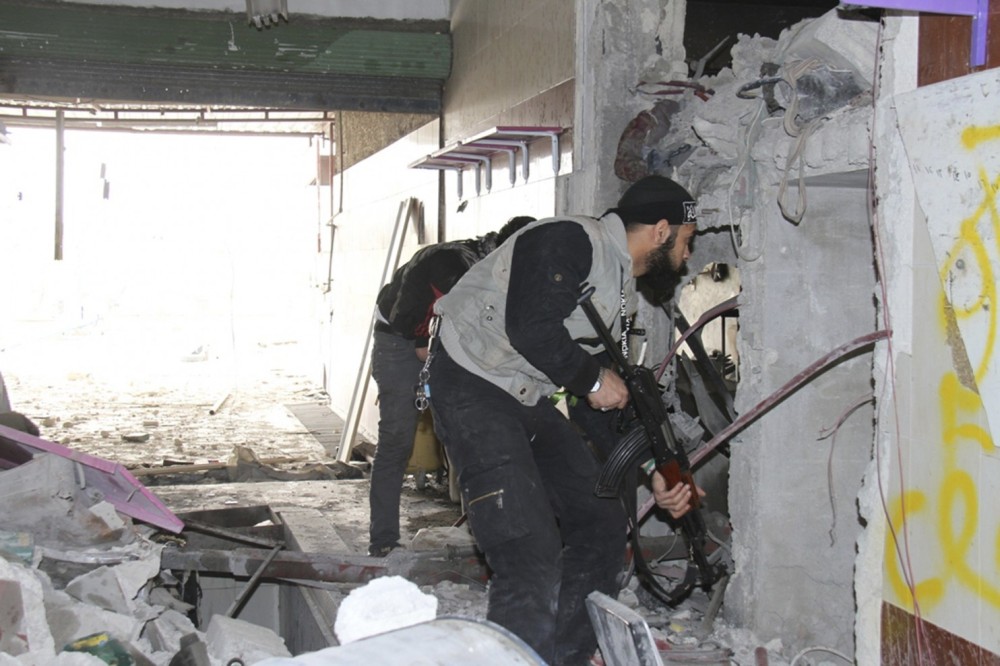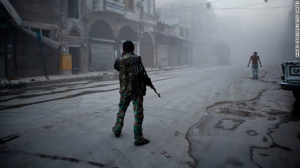Thom Hartmann has written an article entitled “The Mainstream Media’s Criminal Climate Coverage.” Given what we know about global warming, he said, “it’s hard to see the mainstream media’s coverage – or lack thereof – of climate change as anything less than morally and ethically criminal.”2 This is harsh criticism. Is it justified?
1. America’s Climate Complacency
A Washington Post story, reporting the results of a Pew Research poll in 2013, headlined its story, “Americans Are Less Worried about Climate Change than Almost Anyone Else.” In 2014, a poll of 20 wealthy countries found that America leads the world in climate denialism, with 52 percent of the U.S. population stating that climate change is a natural phenomenon (rather than being the result of burning fossil fuels) and denying that the world is headed for environmental disaster unless it quickly changes its habits.3
Why is the United States first in climate complacency? According to leading climate scientist James Hansen, there is in this country “a huge gap between the public’s understanding of the situation and the scientific understanding.”4 But why does this gap exist in America?
Physicist Joe Romm, who started the website Climate Progress, has written that, although “our scientific understanding of business-as-usual projections for global warming has changed dramatically,” the U.S. public largely “remain in the dark about just how dire the situation is. Why? Because the U.S. media is largely ignoring the story,” which Romm called “the story of the century, if not the millennium.”5
Romm is far from the only person to give this assessment. Eric Pooley, one of America’s leading journalists, offered a parable:
“Suppose our leading scientists discovered that a meteor, hurtling toward the earth, was set to strike later this century; the governments of the world had less than ten years to divert or destroy it. How would news organizations cover this story? Even in an era of financial distress, they would throw teams of reporters at it and give them the resources needed to follow it in extraordinary depth and detail. After all, the race to stop the meteor would be the story of the century.”
In Pooley’s parable, carbon-using humanity is the meteor, which is threatening to destroy civilization. This threat is, Pooley said, the “great story, of our time. But news organizations have not been treating it that way.”6
Likewise, Hartmann said: “The mainstream media is failing us when it comes to covering the story of the century.” Pulitzer Prize-winning journalist Ross Gelbspan said that the climate crisis is “undoubtedly the biggest story of this millennium.”And in her inimitable way, Rebecca Solnit wrote that people a century from now “will think the newspapers should have had a gigantic black box above the fold of the front page every day saying “Here are some stories about other things, BUT CLIMATE IS STILL THE BIGGEST STORY OF ALL.”7
However, granted that the U.S. media have not done a good job, is it fair to blame them for the fact that America has more climate denialists, and less concern about climate change, than other wealthy countries? After all, fossil-fuel companies, especially ExxonMobil and Koch Industries, have spent tens of millions of dollars to fund dozens of organizations, including the Tea Party, to make climate denialism appear to have arisen spontaneously from concerned citizens.
However, according to journalist Mark Hertsgaard, the responsibility of the fossil-fuel companies does not lessen that of the media. “As a journalist,” he wrote, “it shames me that the [carbon] lobby could never have succeeded without the assistance of the media.”8
2. How the Mainstream Media Have Failed
A central reason for the media’s failure involves the journalistic norm of “balanced” reporting. As one discussion put it: “Balance aims for neutrality. It requires that reporters present the views of legitimate spokespersons of the conflicting sides in any significant dispute, and provide both sides with roughly equal attention.”9
False Balance
In a study entitled “Balance as Bias,” Maxwell Boykoff and Jules Boykoff said:
“[B]alanced reporting can actually be a form of informational bias. Despite the highly regarded IPCC’s [Intergovernmental Panel on Climate Change’s] consistent assertions . . . , balanced reporting has allowed a small group of global warming skeptics to have their views amplified.”10
In explaining how balance can be bias, the Boykoffs quoted Gelbspan, who wrote:
“The professional canon of journalistic fairness requires reporters who write about a controversy to present competing points of view. When the issue is of a political or social nature, fairness – presenting the most compelling arguments of both sides with equal weight – is a fundamental check on biased reporting. But this canon causes problems when it is applied to issues of science. It seems to demand that journalists present competing points of views on a scientific question as though they had equal scientific weight, when actually they do not.”11
With regard to the idea of giving equal weight to “both sides,” Naomi Oreskes and Erik Conway, authors of the great book Merchants of Doubt, said:
“[O]nce a scientific issue is closed, there’s only one ‘side.’ Imagine providing a ‘balance’ to the issue of whether the Earth orbits the Sun, whether continents move, or whether DNA carries genetic information. These matters were long ago settled in scientists’ minds. Nobody can publish an article in a scientific journal claiming the Sun orbits the Earth.”12
Disputing this issue, Washington Post denialist Charles Krauthammer wrote: “There is nothing more anti-scientific than the very idea that science is settled, static, impervious to challenge.”13
However, although “science” is never settled, because new facts are continually found, some of which require new theories, this does not mean that there are no settled facts. Although plate tectonics was once fiercely debated, it no longer is. Climate science is still evolving, with many remaining questions (such as “climate sensitivity”). But central issues have been settled, including the fact that increased CO2 in the atmosphere is raising the planet’s average temperature and that this global warming is causing climate disruption.
Not only is this a consensus today, with over 97 percent of the world’s active climate scientists agreeing, consensus has existed for a long time. As early as 1997, the Washington Post published a story entitled “Consensus Emerges Earth Is Warming – Now What?”14
Recently, however, the media have largely ignored the distinction between disputed opinion and settled fact. As a result, the media have produced bias. Having studied the stories about global warming in the U.S. “prestige press” (the New York Times, the Washington Post, the Los Angeles Times, and the Wall Street Journal) between 1988 and 2002, Boykoff and Boykoff reported that a majority of the stories were “balanced” in this sense:
“[T]hese accounts gave ‘roughly equal attention’ to the view that humans were contributing to global warming, and the other view that exclusively natural fluctuations could explain the earth’s temperature increase.”
For stories to be truly balanced, they should give only as much attention to the views of contrarian scientists as their numbers represent. In 2014, English comedian John Oliver, on his faux TV news show, “Last Week Tonight,” humorously demonstrated what true balance would be. Having described the typical TV debate between a climate scientist and a climate denier, he pointed out that the debate should really be statistically representative of the two positions. So after having two more people join the denier, Oliver brought in 96 more to join the scientist.15
Gelbspan had suggested something like this many years ago, saying that, if reporters about the climate used the relevant type of balance, a story would primarily discuss the views of mainstream scientists, ”and the skeptics a couple of paragraphs at the end.”16
In any case, the problem with false balance is that it gives unknowing readers the impression that the scientific community is divided on the issue, and this problem primarily exists in the U.S. media. According to a 2012 report comparing the New York Times and Wall Street Journal with leading newspapers in Brazil, China, France, India, and the United Kingdom:
“America is unique when it comes to giving a platform to climate deniers and skeptics. According to a new analysis of data released [in 2011], American newspapers are far more likely to publish uncontested claims from climate deniers, many of whom challenge whether the planet is warming at all.”17
A particularly egregious example of giving an unworthy scientist a platform, in the name of false balance, appeared in an otherwise excellent Associate Press story about the recent IPCC report, which said that if global warming continues, there will be “severe, pervasive and irreversible impacts for people and ecosystems.” The AP then quoted denialist John Christy as saying: “Humans are clever. We shall adapt to whatever happens.” But “quoting John Christy on climate change,” said Romm, “is like quoting Dick Cheney on Iraq.”18
Sometimes, moreover, the press does not even give equal attention to climate science. A 2014 report showed that fringe scientists who rejected the consensus have actually received most of the press coverage, while those who said that “greenhouse gases have caused strong global warming” received only 15% of the coverage.19
Explicit Denialism
Beyond the implicit denialism involved in false balance, there is also a lot of explicit denialism in American media.
The two media giants who are worst in reporting on the climate are owned by Rupert Murdoch’s News Corporation: Fox News and the Wall Street Journal (WSJ). In September 2012, the Union of Concerned Scientists examined the articles during the previous year in the WSJ’s opinion section dealing with climate science, finding that the “representations of climate science were misleading 81 percent of the time.” But that was pretty good compared with Fox News, whose stories over a six-month period in 2012 “were misleading 93 percent of the time.”20
In 2013, the WSJ published an opinion piece entitled “In Defense of Carbon Dioxide,” in which the authors said: “[T]he conventional wisdom about carbon dioxide is that it is a dangerous pollutant. That’s simply not the case. Contrary to what some would have us believe, increased carbon dioxide in the atmosphere will benefit the increasing population on the planet by increasing agricultural productivity,” ignoring that this is true only in cold countries.21
CNBC has not been much better. Examining its stories that dealt with either “global warming” or “climate change” during the first half of 2013, Media Matters found that 51 percent of the stories “cast doubt on whether manmade climate change existed.” The only scientist that CNBC hosted about climate was William Happer, the chairman of the denialist George C. Marshall Institute, who was one of the authors of the aforementioned WSJ opinion piece, “In Defense of Carbon Dioxide.”22
Even the Washington Post has given a lot of space to denialists. In 2011, the editor of the Post’s editorial pages wrote, “The GOP’s climate-change denial may be its most harmful delusion.” But then he continued to publish pieces by his resident denialists, Charles Krauthammer and George Will. Krauthammer, whose claim that there is no settled science was cited earlier, has written so much that Joe Romm referred to a 2014 piece by Krauthammer as “his umpteenth falsehood-fest.”23
Will’s anti-scientific nonsense had gotten so bad in 2009 that other Post reporters contradicted him in a news article. But his perversity continued: In 2014, Will mocked the finding that 97 percent of climate scientists believe that carbon pollution is causing global warming. Asking rhetorically, “who did the poll?” Will suggested that the finding was no more worthy of belief than “100 Authors Against Einstein” produced by a Nazi publishing company. What Will did not tell readers was that what he called a “poll” was actually, as Romm pointed out, “a peer-reviewed analysis of more than 10,000 recent scientific papers on climate science.”24
Fortunately, a reaction against denialism in the media has begun. In general, good newspapers do not publish letters that are based on the denial of basic science, and in 2013 the Los Angeles Times enacted this policy with regard to climate science, with letters editor Paul Thornton explaining:
“I do my best to keep errors of fact off the letters page. . . . Saying ‘there’s no sign humans have caused climate change’ is not stating an opinion, it’s asserting a factual inaccuracy.”
Hartmann responded by saying:
“It’s time for the rest of the media to follow suit. All media outlets, TV, radio, print or otherwise should immediately stop publishing the factual inaccuracies of climate change deniers.”25
Next, Forecast the Facts, hoping to speed up the process, created a petition addressed to five leading newspapers, saying:
“The Los Angeles Times recently announced that they are refusing to publish letters that deny climate change. . . . Sign the petition below to tell the editors of The New York Times, The Washington Post, USA Today, and The Wall Street Journal: our country’s most respected newspapers should refuse to print letters that deny basic science.”
In addition, CREDO Mobilize started a petition addressed to all newspapers, “Tell Newspapers: Don’t Publish Climate Change Deniers.”26
In the U.K., the BBC, perhaps responding to John Oliver’s show, announced that its programs will henceforth give denialists only the amount of coverage their prominence merits. But by the beginning of 2015 this policy has not yet been adopted by most of the U.S. media companies.27
Reduction of Coverage
The U.S. mainstream media’s coverage has also failed by giving inadequate coverage, which can be regarded, along with false balance, as implicit climate denial.
Although the U.S. media’s coverage of climate change has never been very high, its coverage went up in 2009, that being the year of the “Climategate” allegations and the climate conference in Copenhagen – which had been widely discussed as the world’s last chance to prevent catastrophic climate change. But although there were lots of “climategate” stories, “only a few of the major U.S. news outlets,” reported the Energy Daily, “published accounts of the Copenhagen gathering, which received heavy coverage by news outlets in Europe and Asia.”28
Since 2009, moreover, the coverage has consistently gone down, in spite of the increasingly extreme weather and the ever-fasting melting of glaciers (which is becoming so bad that Glacier National Park will soon need to change its name, and the same will be true of the Peruvian mountain range called Cordillera Blanca, or “White Range”). In spite of all such developments, the number of articles in the U.S. media mentioning global warming declined from 2,286 to 2006 to 1,353 in 2013.29
This type of implicit climate denial can be illustrated by actions of the New York Times and the Washington Post.
NYT Eliminates Climate Desk: The most important of the reductions in coverage was what happened at the New York Times in 2013. At the beginning of that year, the Times eliminated its climate desk, which consisted of seven reporters and two editors. Describing the changes as merely “structural,” the paper’s executive editor, Jill Abramson, declared: “We will continue to cover these areas of national and international life just as aggressively.” But as venerable journalist Dan Froomkin asked, “How is that possible?” And Margaret Sullivan, the Times’ public editor, said that preventing the coverage of the environment from suffering “will be a particular challenge.”30
The warnings by Froomkin and Sullivan were not misplaced. Near the end of 2013, Sullivan reviewed how the Times’ environmental coverage had fared since its “structural changes.” Whereas in 2012, there were 362 print articles that featured climate change prominently between April and September, during those same months in 2013 this number dropped to 247. In addition, the number of front-page stories slipped from nine to three.31
When the results for the entire year came in, the number of NYT stories mentioning either “global warming” or “climate change” had plummeted more than 40 percent. According to the University of Colorado, which tracks such changes, this drop was bigger than that of any other newspaper. This was a radical change from 2012, when the Times “had the biggest increase in coverage among the five largest U.S. daily papers,” and when Glenn Kramon, assistant managing editor of the Times, had said: “Climate change is one of the few subjects so important that we need to be oblivious to cycles and just cover it as hard as we can all the time.”32
NYT Eliminates Environmental Blog: Two months after the Times’s elimination of its climate desk, it canceled its Green blog, which had a dozen contributors in addition to its two editors. The Times had created the Green blog in 2008, which was to keep readers up to date on “the high-stakes pursuit of a greener globe.” Then in 2010, “taking things up a notch,” the Times introduced a “more ambitious online effort, broadening our lens to include . . . politics and policy, environmental science and consumer choices.” This was timely, the paper’s editors explained, because the Wall Street Journal had shut down its green blog. The NYT’s blog’s editor, Tom Zeller, said: “Better informed citizens are crucial to building a better, greener civilization.”33
But three years later, the paper’s editors wrote: “The Times is discontinuing the Green blog, which was created to track environmental and energy news and to foster lively discussion of developments in both areas.” This surprise announcement led Curtis Brainard, the editor of the Columbia Journalism Review, to write:
“The Green blog was a crucial platform for stories that didn’t fit into the print edition’s already shrunken news hole. . . , and it was a place where reporters could add . . . information to pieces that did make the paper.”34
The editors who made this decision, continued Brainard,
“should be ashamed of themselves. They’ve made a horrible decision that ensures the deterioration of the Times’s environmental coverage at a time when debates about climate change, energy, natural resources, and sustainability have never been more important to public welfare.”35
Similarly, Drexel University’s Robert Brulle, who according to the Times is “an expert on environmental communications,” said: “The NY Times coverage of the environment has continued its journey from bad to worse. It continues to abrogate its responsibility to inform the public about critical issues.” More sardonically, Slate entitled its response: “The Times Kills Its Environmental Blog to Focus on Horse Racing and Awards Shows.”36
It did not take long for the Times’s reduced coverage to be noticed. In August 2013, for example, the New York Times failed to cover the NOAA’s [National Oceanic and Atmospheric Administration’s] 258-page State of the Climate report, which is used to set U.S. climate policy. This failure, said Media Matters, “calls into doubt the extent to which the paper can be trusted to maintain strong attention to environmental issues in the face of recent organizational changes.”37
Washington Post Does Likewise: The same weekend, the Washington Post reassigned its top environmental reporter – who was a bright spot on a paper blighted by climate deniers such as George Will and Charles Krauthammer. Making a lipstick-on-a-pig announcement, the editors said:
“We’re very excited to announce the latest evolution of our political team — an online strike force that will help lead our journalism during the day. Juliet Eilperin will return to the world of politics to cover the White House. Juliet has had a terrific run on the environment beat, becoming one of the country’s leading reporters on climate change.”
Joe Romm wrote:
“Yes, no point in keeping one of the country’s leading reporters on climate change on the story of the century. She had a good run, but that climate story is so five minutes ago.”38
Then the following year, the Post dropped first-rate blogger Ezra Klein, who regularly informed readers about science-based coverage of climate change, and replaced him with a website called the “Volokh Conspiracy.” This website was aptly named, pointed out a writer at Grist, because many of its bloggers promoted the idea that global warming is a conspiracy, a hoax. It is alarming, said Romm, that “[new owner] Jeff Bezos of the Washington Post would think such uninformed conspiracy mongering belongs at the Post.”39
Television’s Inadequate Coverage
In addition to reducing its coverage, U.S. television networks commonly give woefully inadequate coverage to important events, sometimes ignoring them completely. Saying that “the TV news is a disgrace,” media critic Todd Gitlin wrote,
“Despite the record temperatures of 2012, the intensifying storms, droughts, wildfires, and other wild weather events, the disappearing Arctic ice cap, and the greatest meltdown of the Greenland ice shield in recorded history, their news divisions went dumb and mute.”
Moreover, Gitlin said, “The Sunday talk shows, which supposedly offer long chews and not just sound bites. . . , were otherwise occupied.” Media Matters, he reported, gave this summary of the TV coverage of climate change in 2012:
“The Sunday shows spent less than 8 minutes on climate change. . . . ABC’s This Week covered it the most, at just over 5 minutes. . . . NBC’s Meet the Press covered it the least, in just one 6 second mention. . . . Most of the politicians quoted were Republican presidential candidates, including Rick Santorum, who went unchallenged when he called global warming ‘junk science’ on ABC’s This Week. More than half of climate mentions on the Sunday shows were Republicans criticizing those who support efforts to address climate change. . . . In four years, Sunday shows have not quoted a single scientist on climate change.”40
In June 2013, President Obama gave a major speech, laying out his plan to cut carbon pollution. But except for MSNBC’s Melissa Harris-Perry, the Sunday morning news shows, which supposedly deal with the big stories of the week, ignored it. For the most part, those who relied on TV for their news had to rely on Jay Leno, David Letterman, and Jon Stewart.41
In 2014, the IPCC’s massive fifth assessment report, on which it had been working for several years, was published. MSNBC appropriately devoted almost 20 minutes to it, laying out the risks detailed by the report along with the ineffective attempts to cut carbon. But the coverage by both Fox News and CNN was pathetic.
Fox News did what one would expect: It spent only five minutes on it, most of which was devoted to attacking the idea of climate change, with Bill O’Reilly accusing the climate scientists of wanting to destroy the economy with its “phantom global warming theory.” Although CNN did not attack the IPCC report, it virtually ignored it, devoting only one minute and eight seconds to it. CNN’s Jack Tapper did acknowledge that “all of human civilization could be at risk,” but CNN considered this point deserving of only 48 seconds.42
Ignoring Climate Change while Discussing Extreme Weather
Given the increasingly extreme weather of the past several years, the media were virtually forced to discuss it. But they usually have not felt compelled to connect the extreme weather with climate change, which was true of both newspaper and television coverage. This was even true of 2013, which was “a big year for climate,” especially “the increase in ferocity of our weather.” The extreme weather events of that year included “deadly flooding in Colorado, the string of major wildfires across the American West, and bouts of unseasonable temperatures across the country.” But according to Fairness and Accuracy in Reporting, a study of 450 stories in the nightly news showed that “96 percent of extreme weather stories never discussed the human impact on the climate.”43
(This failure cannot be justified by the reluctance of climate scientists to attribute particular weather events to global warming. Climate scientists now agree that, in Kevin Trenberth’s words, “Global warming is contributing to an increased incidence of extreme weather because the environment in which all storms form has changed from human activities.” Likewise, James Hansen said: “We now know that the chances these extreme weather events would have happened naturally — without climate change — is negligible.”44)
Media Matters reported essentially the same thing, referring to the Midwest floods in the spring of 2013. Whereas ABC, CBS, NBC, and CNN had devoted a total of 74 segments to the flooding, not one mentioned climate change (CBS came the closest, mentioning that heavy downpours have increased). Media Matters found the newspaper stories hardly better. In a total of 35 articles about the floods, only one by USA Today mentioned climate change. Reuters and the Associated Press, Los Angeles Times, New York Times, and Wall Street Journal stories remained silent about it.45
Even NPR was guilty of this failure. In 2013, after commenting about an NPR story that mentioned the melting of glaciers without explaining why, Joe Romm said, “apparently we won’t be hearing more about why more glaciers are receding or speeding up — or what it all really means for humanity, like say, that whole sea level rise thing.”46
3. The U.S. Media’s Ultimate Crime
In 2014, a host for a CNN show, reflecting on what it would take to change the thinking and actions of average Americans, wrote:
“Here’s what is missing from our national conversation about climate change: an emotional charge that hits you in the gut. . . . We need in-your-face cause and effect. Every day, it seems, a new extreme weather catastrophe happens somewhere in America and the media’s all over it, profiling the ordinary folks wiped out by forest fires, droughts, floods, massive sinkholes, tornadoes. But do reporters covering the who, what, when, where and how, ever talk about the real why? . . . . No. It’s still considered inappropriate to talk about the big elephant in the field, namely what we have long accepted as an act of God is increasingly becoming an act of man.”47
As for what a good story would be like, an example was provided by reporter Clayton Sandell of ABC News. In a segment headed “Extreme Weather from Mother Nature,” Sandel said:
“Scientists say human-caused climate change is already helping shift the planet’s natural balance. Creating more heat waves, drought, and intense downpours. A stormy and expensive reality, that’s already on our doorsteps.”48
In addition, a writer for the New Yorker has explained how slight changes in typical presentations could help people connect extreme weather with climate change. Whereas exceptionally cold weather generally weakens Americans’ belief in climate change, in the UK it strengthens it. The reason for the difference, concluded researchers at Cardiff University, is that the UK media “had framed the weather within the context of climate change, emphasizing that it was unnatural, rather than simply cold. Perhaps,” said the writer, “if people here were told that it’s not just brutal out there, it’s unnaturally brutal, they, too, might jump to a different conclusion.”49
Accordingly, there are simple things the media could do that could help the public understand the reality and seriousness of climate change. But as it is, Gelbspan said, the U.S. press coverage of the crisis is “a betrayal of the public trust.”50
The culpability of the American press has also been expressed by journalist Wen Stephenson, who had worked at NPR, PBS, the Atlantic, and the Boston Globe. In an open letter to his former journalism colleagues, Stephenson said:
“[Y]ou are failing. Your so-called ‘objectivity,’ your bloodless impartiality, are nothing but a convenient excuse for what amounts to an inexcusable failure to tell the most urgent truth we’ve ever faced. What’s needed now is crisis-level coverage.”
Spelling out what this would mean, Stephenson continued:
“In a crisis, the criteria for top news is markedly altered, as long as a story sheds light on the crisis topic. In crisis coverage, there’s an assumption that readers want and deserve to know as much as possible. In crisis coverage, you ‘flood the zone.’ The climate crisis is the biggest story of this, or any, generation — so why the hell aren’t you flooding the climate ‘zone,’ putting it on the front pages and leading newscasts with it every day?”51
Besides being an inexcusable failure and a betrayal of the public trust, the U.S. media’s failure can be considered the ultimate crime.
Writing in the Guardian, Stephan Lewandowsky said: “The media failed to accurately report facts prior to the Iraq War; climate reporting is failing in similar fashion.” Some journalists who had supported the Bush-Cheney administration’s claims about weapons of mass destruction felt anguish about having used “’evidence’ now known to be bogus” to support the push for war. “The lethal fallout from misinformation a decade ago,” wrote Lewandowsky, “primarily affected the people of Iraq.” But “the fallout from misinformation about climate change is likely to affect us all.”52
Indeed, some journalists – besides Eric Pooley, who was quoted above – have said that unmitigated climate change threatens the very continuation of civilization.
- In his criticism of the mainstream media’s climate coverage as criminal, Hartmann said: “After all, the future of all life on Earth is at stake.”
- In his critique of U.S. press coverage as a “damning betrayal of public trust,” Gelbspan said climate change “threatens the survival of our civilization.”
- Romm said that “unless we start cutting carbon pollution soon, the impacts threaten to destroy the stable climate that made modern civilization possible.”53
Moreover, it has become a consensus among scientists, along with others who know the scientific facts, that climate change caused by global warming threatens to bring civilization to an end.
- “Global warming,” said Nobel laureate Paul Crutzen, “[is] raising concerns about the [ability] of Earth’s environment . . . to maintain viable human civilizations.”
- Lester Brown subtitled a book Mobilizing to Save Civilization.
- National Medal of Science recipient Lonnie Thompson, explaining the new outspokenness of climate scientists, responding to the question of why sober climatologists have begun speaking out publicly about the dangers of global warming, said that “virtually all of us are now convinced that global warming poses a clear and present danger to civilization.”
- Former Vice President Al Gore, speaking of the climate crisis, said: “What hangs in the balance is the future of civilization as we know it.”
- In 2011, Lester Brown, Bill McKibben, and a large number of other environmental leaders, wrote a letter to the presidents of the United States and China, saying: “It is time to publicly acknowledge that the continued burning of fossil fuels threatens the survival of civilization.”
- In 2012, twenty previous winners of the Blue Planet Prize said that “society has no choice but to take dramatic action to avert a collapse of civilization.”54
The destruction of civilization, some writers have pointed out, would amount to suicide:
- New Yorker writer Elizabeth Kolbert famously said: “It may seem impossible to imagine that a technologically advanced society could choose, in essence, to destroy itself, but that is what we are now in the process of doing.”
- Mohamed Nasheed, while he was the president of Maldives, said that if the nations fail to sign a commitment to bring carbon emissions down, they will in effect have signed a “global suicide pact.”
- Paul and Anne Ehrlich, saying that climate disruption is threatening human civilization with collapse, added: “Humankind finds itself engaged in what Prince Charles described as ‘an act of suicide on a grand scale.’”55
However, unlike suicide in the normal sense, the suicide involved in the destruction of civilization would take not simply the politicians, media moguls, owners of fossil-fuel companies, and others who actively caused it, but all the rest of us, too. Accordingly, in light of the stakes, the U.S. media’s coverage of climate change is not simply a crime, but the ultimate crime.
In 2013, Tom Engelhardt, recognizing that genocide is usually considered the ultimate crime, coined the term “terracide” to describe an even more ultimate crime, writing:
“To destroy our planet with malice aforethought, with only the most immediate profits on the brain, with only your own comfort and wellbeing (and those of your shareholders) in mind: Isn’t that the ultimate crime? Isn’t that terracide? It would be, because it would be not only the ‘ultimate crime against humanity’ but also ‘against most living things.’”56
The fossil-fuel companies are guilty of the ultimate crime, he said, because they are earning their “profits directly off melting the planet, knowing that their extremely profitable acts are destroying the very habitat, the very temperature range that for so long made life comfortable for humanity.”57
As indicated, Engelhardt directs his indictment at fossil-fuel companies. But as Hartmann and Hertsgaard both pointed out, the fossil-fuel companies could never have been able to continue their polluting ways – long after the scientific community had reached consensus about connection between fossil-fuel emission, global warming, and climate change – without the assistance of the media. And so the U.S. media share the responsibility for terracide.
Noam Chomsky has explicitly connected the U.S. media to the ultimate crime: Besides writing that “we are moving toward what may in fact be the ultimate genocide – the destruction of the environment,” Chomsky said: “The media cooperate by not even reporting the increasingly dire forecasts of international agencies and even the U.S. Department of Energy.”58
Conclusion
Accordingly, Hartmann’s charge is correct in spades: Besides being guilty of betraying the public trust, the U.S. mainstream media’s climate coverage is guilty of facilitating the move toward the ultimate crime, terracide.
David Ray Griffin is emeritus professor at Claremont Theology School and Claremont Graduate University. His most recent book is Unprecedented: Can Civilization Survive the CO2 Crisis? (Clarity Press, 2015).
Notes
1. This essay is an adaptation of a chapter entitled “Media Challenge” in Unprecedented: Can Civilization Survive the CO2 Crisis? (Clarity Press, 2015).
2. Thom Hartmann, “The Mainstream Media’s Criminal Climate Coverage,” 26 February 2014.
3. Max Fisher, “Americans Are Less Worried about Climate Change than Almost Anyone Else,” Washington Post, 27 September 2013; referring to “Climate Change: Key Data Points from Pew Research,” Pew Research Center, 2 April 2013; Joanna B. Foster, “Poll: U.S. Leads the World . . . in Climate Denial,” Climate Progress, 22 July 2014.
4. Richard Gray, “Climate Scientists Are Losing the Public Debate on Global Warming,” Telegraph, 8 April 2012.
5. Joe Romm, “Media Largely Ignores Latest Warning from Climate Scientists,” Climate Progress, 19 March 2009; Romm, “A Stunning Year in Climate Science Reveals that Human Civilization Is on the Precipice,” Climate Progress, 15 November 2010.
6. Eric Pooley, “How Much Would You Pay to Save the Planet? American Press and the Economics of Climate Change,” Joan Shorenstein Center on the Press, Politics and Public Policy, John F. Kennedy School of Government, January 2009.
7. Hartmann, “The Mainstream Media’s Criminal Climate Coverage”; Ross Gelbspan, “U.S. Press Coverage of the Climate Crisis: A Damning Betrayal of Public Trust,” The Heat is Online, June 2010; Rebecca Solnit, “Everything’s Coming Together While Everything Falls Apart: The Climate for 2015,” TomDispatch, 23 December 2014.
8. Mark Hertsgaard, Hot: Living Through the Next Fifty Years on Earth (New York: Houghton Mifflin Harcourt, 2011), 263.
9. Robert M. Entman, Democracy Without Citizens: Media and the Decay of American Democracy (New York and Oxford: Oxford University Press, 1989), 30.
10. Maxwell T. Boykoff and Jules M. Boykoff, “Balance as Bias: Global Warming and the US Prestige Press,” Global Environmental Change 14 (2004), 125–136.
11. Ross Gelbspan, The Heat Is On: The Climate Crisis, the Cover-Up, the Prescription (Perseus Press: Cambridge, 1998), 57-58.
12. Naomi Oreskes and Erik M. Conway, Merchants of Doubt (New York: Bloomsbury, 2010), 214.
13. Charles Krauthammer: The Myth of ‘Settled Science,’” Washington Post, 20 February 2014.
14. A 2009 study found that, when asked whether “human activity is a significant contributing factor in changing mean global temperatures,” 97.5% of climatologists who actively publish research on climate change responded “yes”; Peter T. Doran and Maggie Kendall Zimmerman, “Examining the Scientific Consensus on Climate Change,” Earth and Environmental Sciences 90/20 (20 January 2009); Joby Warrick, “Consensus Emerges Earth Is Warming – Now What?” Washington Post, 11 November 1997. Washington Post, 11 November 1997.
15. Boykoff and Boykoff, “Balance as Bias”; Joe Romm, “The 97 Percent: Watch John Oliver’s Hilarious ‘Statistically Representative Climate Change Debate,’” Climate Progress, 12 May 2014.
16. Gelbspan, “U.S. Press Coverage of the Climate Crisis.”
17. Stephen Lacey, “American Newspapers Are Number One in Climate Denial,” Climate Progress, 14 October 2012.
18. Joe Romm, “Climate Scientists Spell Out Stark Danger and Immorality of Inaction in New Leaked Report,” Climate Progress, 27 August 2014; referring to Seth Borenstein, “Draft Of Upcoming IPCC Report Presents Stark View of the Future As Climate Change Rages On,” Associated Press, 26 August 2014.
19. John Abraham and Dana Nuccitelli, “New Study Finds Fringe Global Warming Contrarians Get Disproportionate Media Attention,” Guardian, 11 August 2014.
20. “Science Group Calls on News Corp. to Improve Climate Science Content,” Union of Concerned Scientists, 21 September 2012.
21. Harrison H. Schmitt and William Happer, “In Defense of Carbon Dioxide,” Wall Street Journal, 9 May 2013.
22. Shauna Theel, “CNBC’s Climate Denial Is Bad for Business,” Media Matters, 18 June 2013.
23. Fred Hiatt, “On Climate Change, the GOP Is in Never-Never Land,” Washington Post, 15 April 2011; Joe Romm, “Shameless Flameout: Washington Post Once Again Publishes George Will’s Anti-Scientific Nonsense,” Climate Progress, 17 January 2013; Romm, “Paging Jeff Bezos: George Will Compares Climate Scientists to Nazis,” Climate Progress, 28 February 2014
24. Joe Romm, “Washington Post Publishes Two Strong Debunkings of George Will’s Double Dose of Disinformation,” Climate Progress, 21 March 2009; Joe Romm, “Washington Post Reporters Take Unprecedented Step of Contradicting Columnist George Will in a News Article,” Climate Progress, 7 April 2009; Romm, “Paging Jeff Bezos: George Will Compares Climate Scientists to Nazis.”
25. Paul Thornton, “On Letters from Climate-Change Deniers,” Los Angeles Times, 8 October 2013; Thom Hartmann, “The Mainstream Media’s Criminal Climate Coverage,” 26 February 2014.
26. “Tell Newspapers: Don’t Publish Climate Denial,” Forecast the Facts.
27. Emily Atkin, “To Improve Accuracy, BBC Tells Its Reporters to Stop Giving Air Time to Climate Deniers,” Climate Progress, 7 July 2014.
28. Quoted in Joe Romm, Straight Up: America’s Fiercest Climate Blogger Takes on the Status Quo Media, Politicians, and Clean Energy Solutions (Island Press, 2010), 58.
29. Douglas Fischer, “Climate Coverage Down Again in 2011,” Daily Climate, 17 January 2012; Jack Shafer, “Why We’re So Blasé about Global Warming,” Reuters, 30 August 2014.
30. Margaret Sullivan, “Keeping Environmental Reporting Strong Won’t Be Easy,” New York Times, 11 January 2013.
31. Joanna M. Foster, “Climate Coverage Drops at the New York Times after Paper Closed Its Environmental Desk,” Climate Progress, 25 November 2013.
32. Joe Romm, “Silence of the Lambs: Climate Coverage Drops at Major U.S. Newspapers, Flatlines on TV,” Climate Progress, 14 January 2014; Douglas Fischer, “Climate Coverage, Dominated by Weird Weather, Falls Further in 2012,” Daily Climate, 2 January 2013.
33. Tom Zeller, Jr., “Green: A New Name, a Broader Mission,” New York Times, 21 April 2010.
34. Curtis Brainard, “NYT Cancels Green blog,” Columbia Journalism Review, 1 March 2013.
35. Ibid.
36. Joe Romm, “In Epic Blunder, NY Times and Washington Post All but Abandon Specialized Climate Science Coverage,” Climate Progress, 4 March 2013.
37. Max Greenberg, “Two Big Climate Stories You Didn’t Read About in The New York Times: Times Skips Stories Soon after Closing Environmental Desk and Green Blog,” Media Matters, 7 August 2013.
38. Romm, “In Epic Blunder, NY Times and Washington Post.”
39. Joe Romm, “Washington Post Drops Climate Hawk Ezra Klein, Adds Climate Confusionist Blog Volokh Conspiracy,” Climate Progress, 23 January 2014.
40. Todd Gitlin, “Is the Press Too Big to Fail?
It’s Dumb Journalism, Stupid,” in “The Tinsel Age of Journalism,” Tomgram, 25 April 2013.
41. Joe Romm and Andrew Breiner, “Sunday News Shows Ignored Obama’s Climate Plan but Late-Night Comics Picked Up the Slack,” Climate Progress, 1 July 2013.
42. Andrew Breiner, “CNN Ignores Major Climate Report, But Fox News Does Something Even Worse,” Climate Progress, 2 April 2014.
43. Emily Atkin, “96 Percent of Network Nightly News’ Coverage of Extreme Weather Doesn’t Mention Climate Change,” Climate Progress, 19 December 2013.
44. John M. Broder, “Scientists See More Deadly Weather, but Dispute the Cause,” New York Times, 15 June 2011; Amanda Holpuch, “NASA’s Scientist’s Study Quantifies Climate Change Link to Extreme Guardian,7 August 2012.
45. Jill Fitzsimmons and Shauna Theel, “Media Ignore Climate Context of Midwest Floods,” Media Matters, 7 May 2013.
46. Joe Romm, “NPR Airs Story on Melting Glaciers without Explaining Why They Are Melting,” Climate Progress, 30 May 2013.
47. Jane Velez-Mitchell, “Let’s Tell the Truth about Extreme Weather,” CNN, 16 May 2014.
48. Clayton Sandell, “Extreme Weather from Mother Nature,” ABC News, 24 June 2013.
49. Maria Konnikova, “Hot Heads in Cold Weather,” New Yorker, 7 February 2014.
50. Gelbspan, “U.S. Press Coverage of the Climate Crisis.”
51. Wen Stephenson, “A Convenient Excuse,” The Phoenix, 5 November 2012.
52. Stephan Lewandowsky, “Media Failure on Iraq War Repeated in Climate Change Coverage,” Guardian, 6 December 2013.
53. Hartmann, “The Mainstream Media’s Criminal Climate Coverage”; Gelbspan, “U.S. Press Coverage of the Climate Crisis”; Joe Romm, “Climate Change 101: An Introduction,” Years of Living Dangerously.
54. Paul J. Crutzen, “The Anthropocene: Are Humans Now Overwhelming the Great Forces of Nature?” Ambio 36/8 (December, 2007), 614-21; Lester Brown, Plan B 4.0: Mobilizing to Save Civilization, substantially revised edition (New York: W. W. Norton, 2009); Lonnie G. Thompson, “Climate Change: The Evidence and Our Options,” Behavior Analyst, 33/2 (Fall 2010), 153–70; Al Gore, “Climate of Denial: Can Science and the Truth withstand the Merchants of Poison?” Rolling Stone, June 2011; Lester Brown et al., “Presidents Obama, Hu: Declare Global Climate Emergency, say Green Business Leaders, NGOs,” Sustainable Business, 19 January 2011; The Blue Planet Laureates, “Environment and Development Challenges: The Imperative to Act,”February 20, 2012.
55. Elizabeth Kolbert, Field Notes from a Catastrophe: Man, Nature, and Climate Change (Bloomsbury, 2006), 189; Nasheed Fears ‘Suicide Pact’ at Copenhagen,” Agence France-Presse, 9 November 2009; Paul R. Ehrlich and Anne H. Ehrlich, “Can a Collapse of Global Civilization Be Avoided?” Proceedings of the Royal Society B, 9 January 2013.
56. Tom Engelhardt, “The Biggest Criminal Enterprise in History,” TomDispatch, 23 May 2013; “Is Climate Change a Crime against Humanity?” TomDispatch, 22 May 2014.
57. Engelhardt, “The Biggest Criminal Enterprise in History.”
58. Noam Chomsky and Andre Vitchek, On Western Terrorism: From Hiroshima to Drone Warfare (Pluto Press, 2013), 2; Noam Chomsky, “Destroying the Commons:
How the Magna Carta Became a Minor Carta,” in “Tomgram: Noam Chomsky, The Great Charter, Its Fate, and Ours,” TomDispatch, 22 July 2012.

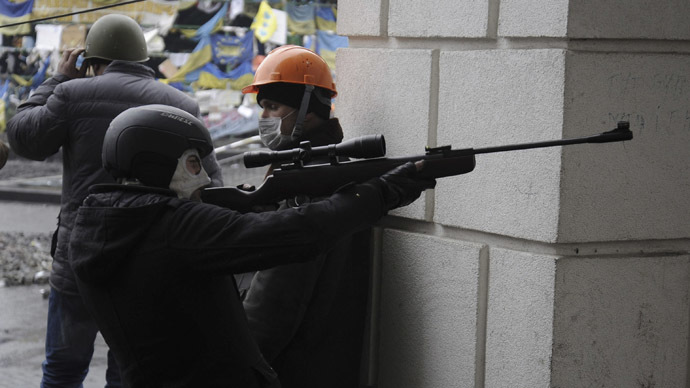

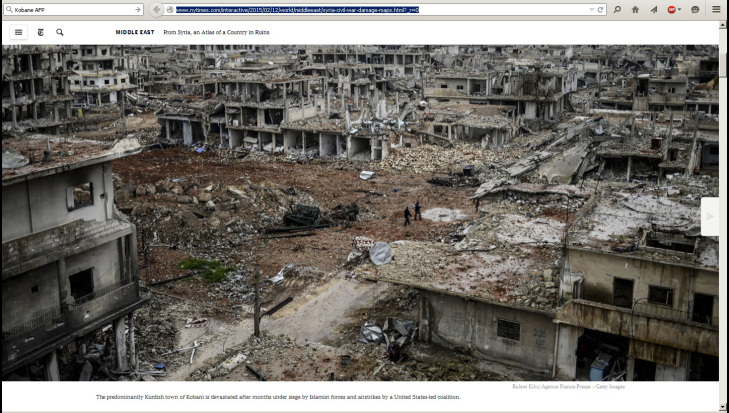
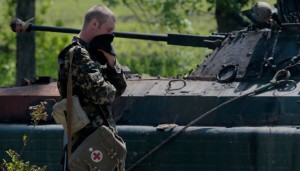
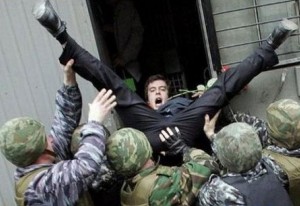


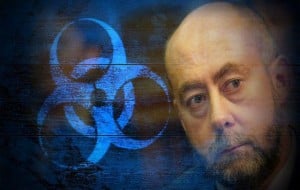


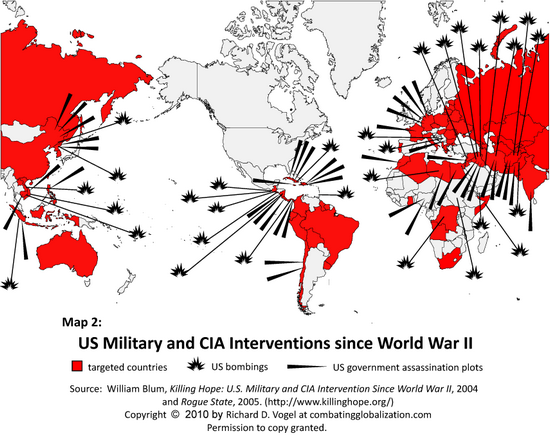


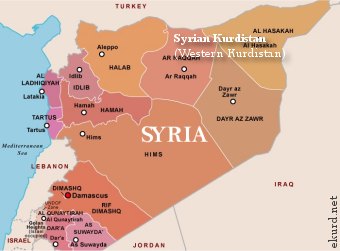 One possible ”break-up scenario”
One possible ”break-up scenario” 

